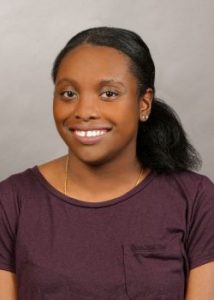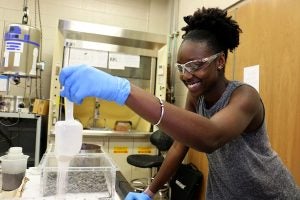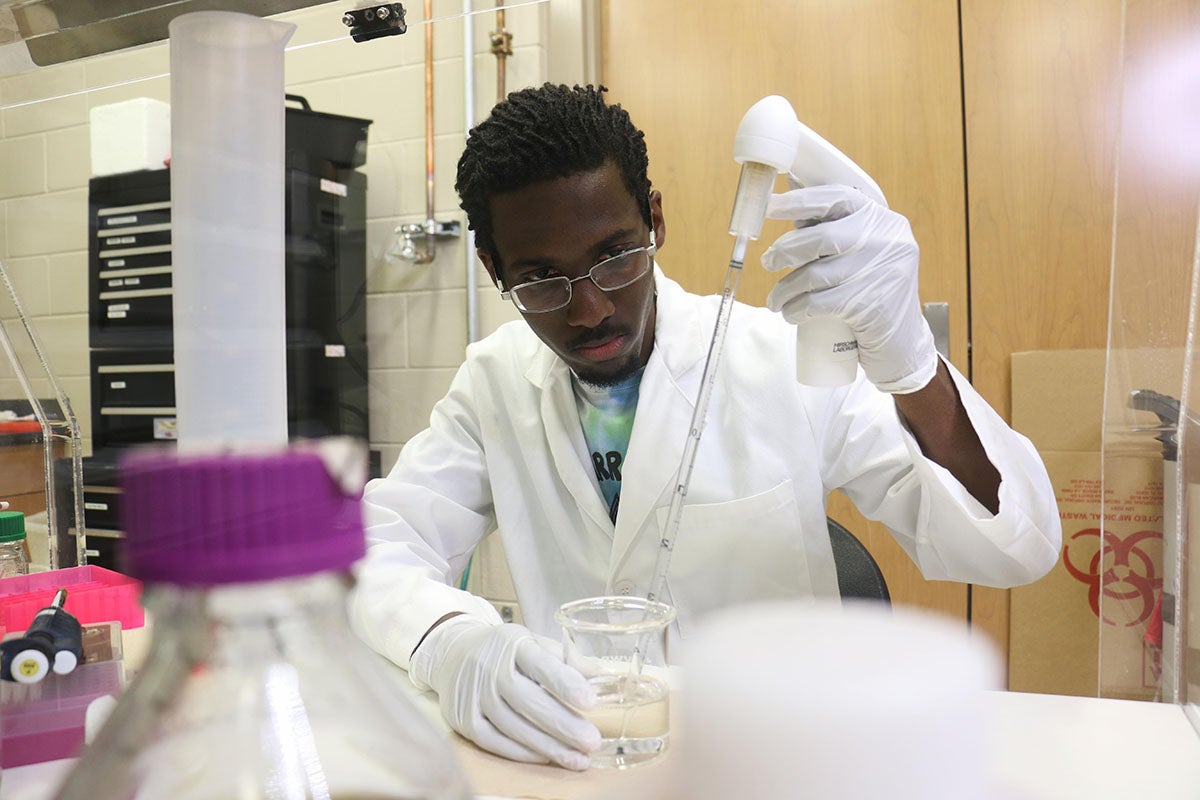When Taylor Douglas fell in love with physics and began to pursue it in college, she started to feel like an outsider.
Most of her classmates were men and white. After earning her bachelor’s degree at Rowan University in New Jersey, she applied to several institutions to pursue a master’s degree, something only 6 percent of underrepresented students nationwide attain in the field of physics.
Every program other than UCF passed on her.
“Without the Bridge Program I would not be in academia right now,” she says.

The American Physical Society created the Bridge Program in 2015 to help increase diversity in the field by encouraging and supporting underrepresented students to pursue doctoral degrees in physics. UCF was among the first universities to adopt the program that year. Eduardo Mucciolo, chair of the UCF Department of Physics, says the program has been instrumental in increasing the number of underrepresented graduate students in physics across the nation.
In 2015, there were almost no Black students pursuing advanced degrees in physics at UCF, he says. Since then, at least a dozen students have enrolled through the Bridge program. The first Black graduate of the program nationwide was from UCF – Tommy Boykin, who earned his master’s degree in 2016 and his doctorate in 2019. Several other Bridge scholars have won awards and all are steadily moving toward degree completion, Mucciolo said.
“Our commitment to inclusion and diversity is quite strong and we have been recognized for it. The department has hosted both the IGEN (Inclusive Graduate Education Network) national meeting last October, and in February the National Mentoring Communities meeting. Both were well attended by participants from all over the country,” Mucciolo says.
Douglas credits the program with helping her feel more comfortable in the physics community. The program not only offers support resources, it brings together students and faculty that share common experiences, frustrations, successes, and advice. There are still challenges, but the community helps, she said.
How Bridge Works at UCF
The program at UCF aims to help students attain a master’s degree and prepare for doctoral programs at UCF or other institutions.
New students are welcomed and matched with other experienced students in the program. They are also matched with a faculty mentor who helps them transition into graduate-student life. Students also have an array of choices when it comes to research, working in a variety of physics labs or in affiliated faculty labs in the College of Optics and Photonics, the Nanoscience Technology Center, the Advanced Materials Processing and Analysis Center, the Florida Solar Energy Center, or the Florida Space Institute. There are required and elective workshops and advising to help students stay on track and make the jump from master’s to doctorates. The program, led by Talat Rahman, a physics and Pegasus Professor, also offers students networking opportunities at UCF and at conferences.
“Only about 5 percent of physics faculty in the nation are African American or Hispanic,” says Mucciolo. “This is in part due to the very low numbers of physics doctoral degrees awarded to these groups. We are eager to change that statistic, because diversity means better science. The more diverse ideas and experiences are, the quicker we get to answers facing our world.”

Douglas, who is in her second year of her master’s degree program, plans on pursuing her doctorate in physics and neuroscience and eventually move on to work at a national lab focusing on disease studies. “I am hoping to make an impact on the field with new and accessible curative therapies, as well as preventative care,” she says.





